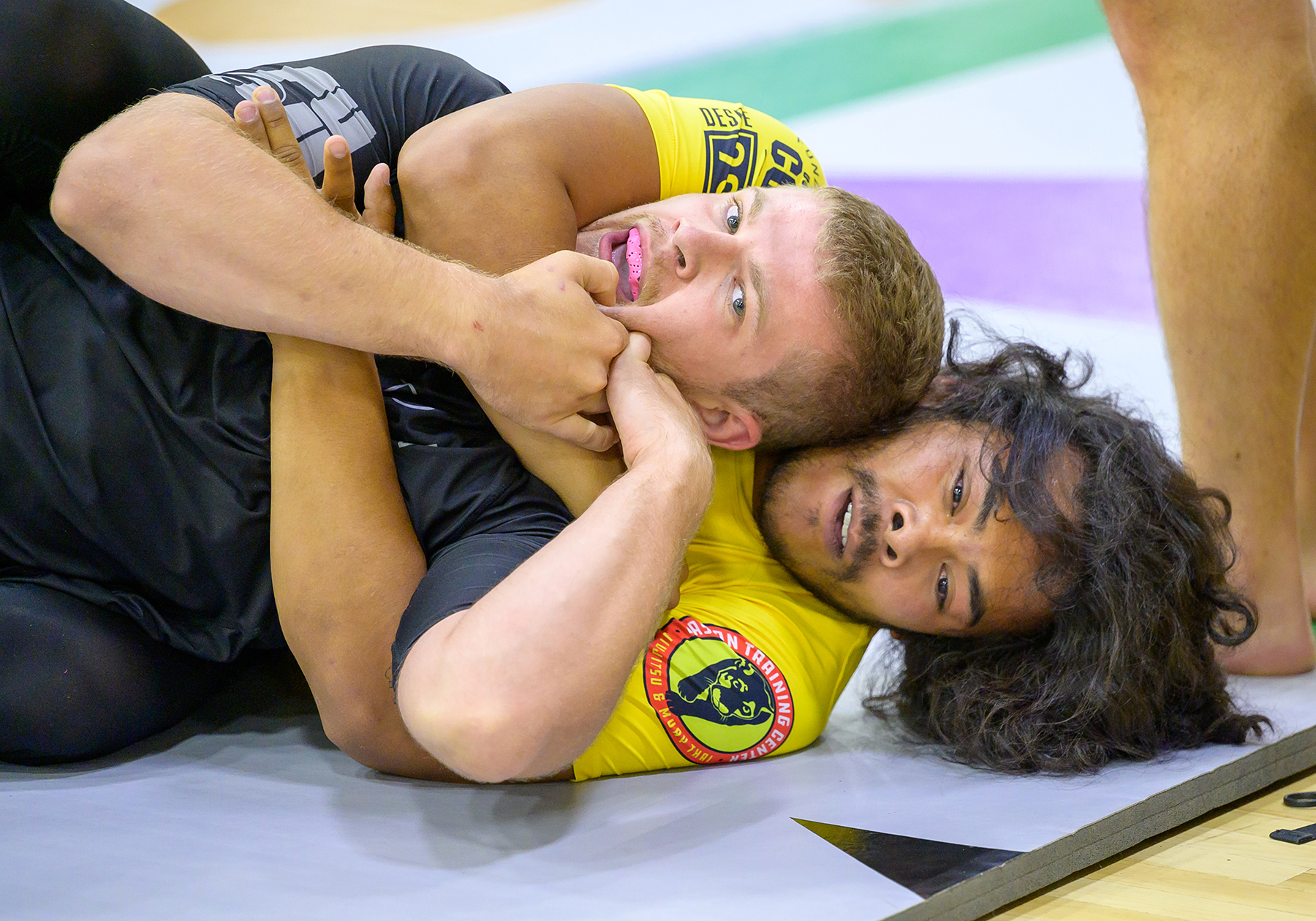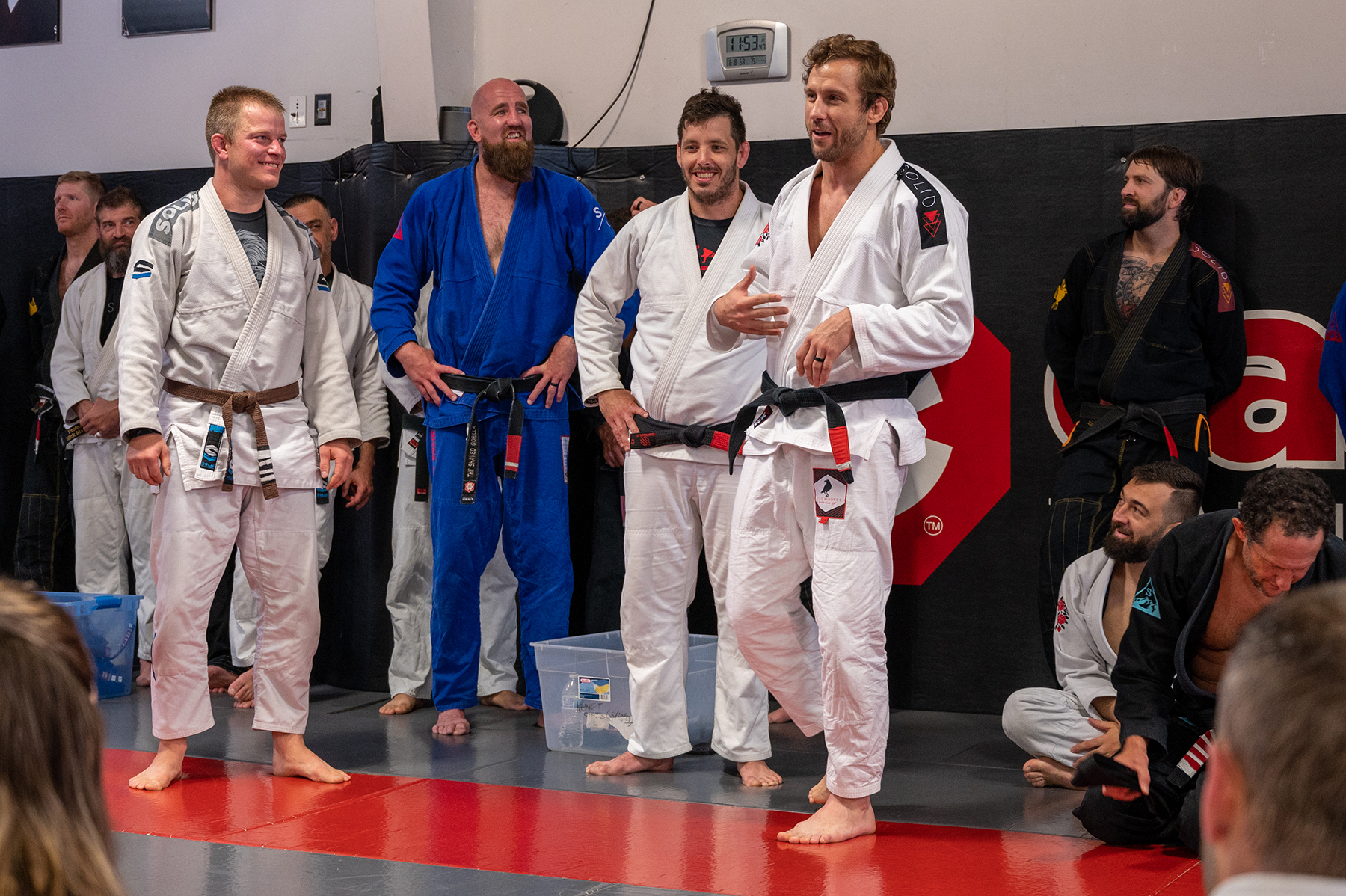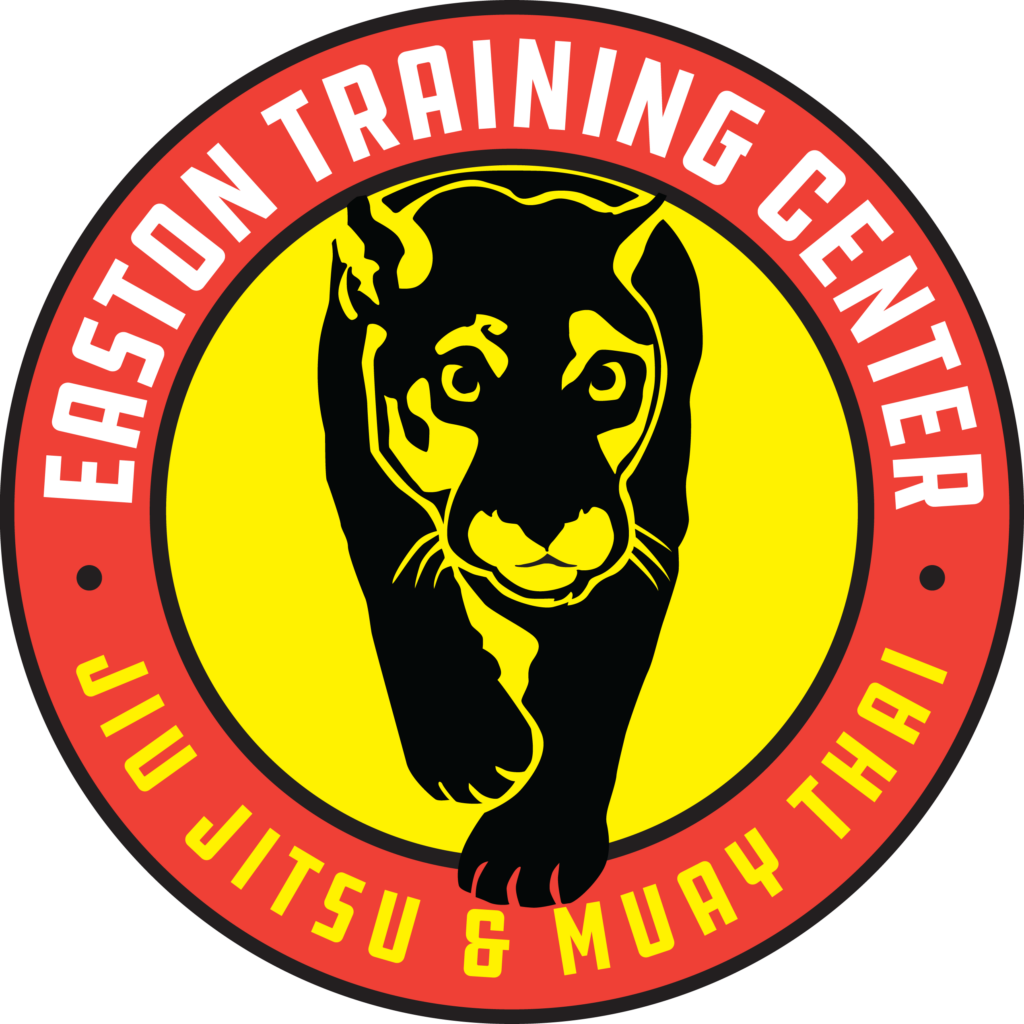Editor’s Note: This piece is the continuation of a two-part article about themes found in Steven Pressfield’s book, The War of Art, and how they apply to us every day, both on and off the mats.
In the second part of Steven Pressfield’s book, The War of Art, “Combating Resistance”, he mentions the difference between an amateur and a professional. However, his definition doesn’t so much define the literal meaning of the two.
He doesn’t define the professional merely as someone who gets paid for his or her activity. He defines the professional as an ideal.
“The amateur is a weekend warrior,” Pressfield writes. “The professional is there seven days a week.”
How many of us, especially in the beginning of our Jiu Jitsu journey, have obsessed over YouTube videos, told everyone who would listen about Jiu Jitsu and how amazing it is, yet only show up to train a few times a month?
That is the amateur. The professional shows up at every chance she has, bowing in 15 minutes late because her work meeting ran over.
The professional comes to Randori on Saturday, his kids patiently (hopefully) sitting on the benches. The amateur might legitimately say, “I couldn’t find a babysitter this weekend. I should be able to come to Randori next week.”
I’m not implying that all of us are destined to be that professional, nor is there anything wrong with being an “amateur.” We get to decide for ourselves what we want to achieve.

[Resistance: Defining What Stands In Our Way (Usually Us)]
How to be miserable
One of my favorite chapters in The War of Art is titled How To Be Miserable. I can’t think of a better chapter that can relate to our time on the mats.
Pressfield reflects on his time in the United States Marine Corps and how “Marines love to be miserable.” Marines take pride in having the worst conditions and the crappiest equipment. Why? Because it reflects their ability to embrace and overcome adversity.
The same goes with Jiu Jitsu. How many hours do we spend getting smashed by heavier and more skilled practitioners? How much sweat have we left on the mats? How much sweat from others has landed on us? How many times will we have broken hearts from not being able to make progress? It is for sure miserable, and often so. Do any of us actually wish it was easy? I doubt it.
In Rickson Gracie’s book Breathe, he tells a story of feeling scared and claustrophobic during his early days in training. He intentionally had one of his brothers roll him up in a carpet and to keep him trapped in the confined and hot space. He forced himself to be comfortable in an uncomfortable situation, and ultimately faced his fear head-on and found ways to overcome it.
We can all combat our own fears and resistance in various ways. A couple simple ways: be a “professional” and show up when others might not, embrace uncomfortable situations, and embrace the suck.

Invoking the Muse to help
Pressfield, in his final section of his book, writes of “invoking the muse.” He believes that there is a muse, an outside power or source of inspiration, that guides him with his creativity. Every day before he starts writing, he recites, out loud, the beginning of Homer’s Odyssey. I sometimes think of these muses when I bow during Jiu Jitsu training.
I don’t always give a genuine bow when entering the mats. I often go through the motions, just a quick duck of the head and the obligatory hand-slap to my sides.
However, I sometimes give a deeper and more heart-felt bow to something or someone specific. A bow to the pictures of our lineage. The pictures of Jigoro Kano, Mitsuyo Maeda, Helio Gracie, and of course our own Amal Easton and Eliot Marshall. A bow to the belt display. A bow to our amazing instructors who take the time to help us better ourselves. A genuine bow from the heart. Who knows? Maybe this is how we invoke our muse on the mats.
Another part of this last section of the book pays homage to the Hindu scripture, The Bhagavad Gita. In the Gita, there is a verse that basically states that we are “entitled to our labor, but not entitled to the fruits of our labor.”
We should train and strive to better ourselves for the love of the art, not for the accolades or attention. Although we all want that next belt promotion, it shouldn’t be the end goal. The love, and perfection, of the art should motivate us, not the next belt color.
I think we can all look ourselves in the mirror and take lessons from The War of Art. We can learn about our own internal resistance and understand the difference between an excuse and a true obligation. We can find ways to battle resistance. I don’t think there is a BJJ black belt that exists that hasn’t somehow overcome extreme adversity. And, I am not talking about learning the actual martial art. I;m speaking of their Resistance.
There are many more pages in the book that can inspire us to improve in our Jiu Jitsu journey, and I highly recommend picking up a copy. It’s a great reference for inspiration, on and off the mat — a reminder that we’re not alone with our internal battles with the Self.
It is a reminder that the enemy is within and a reminder that this enemy, the Resistance, can be defeated.







